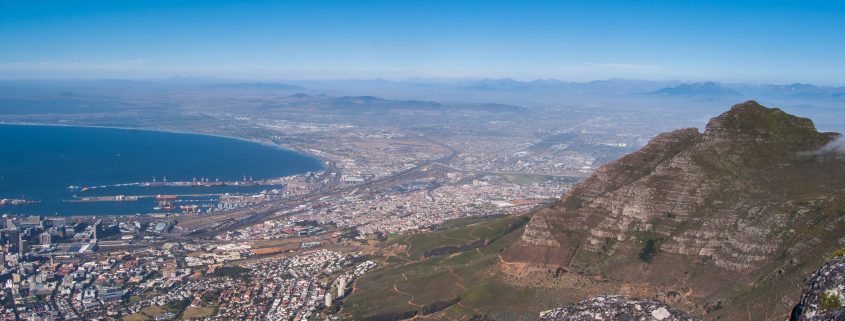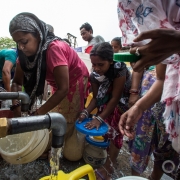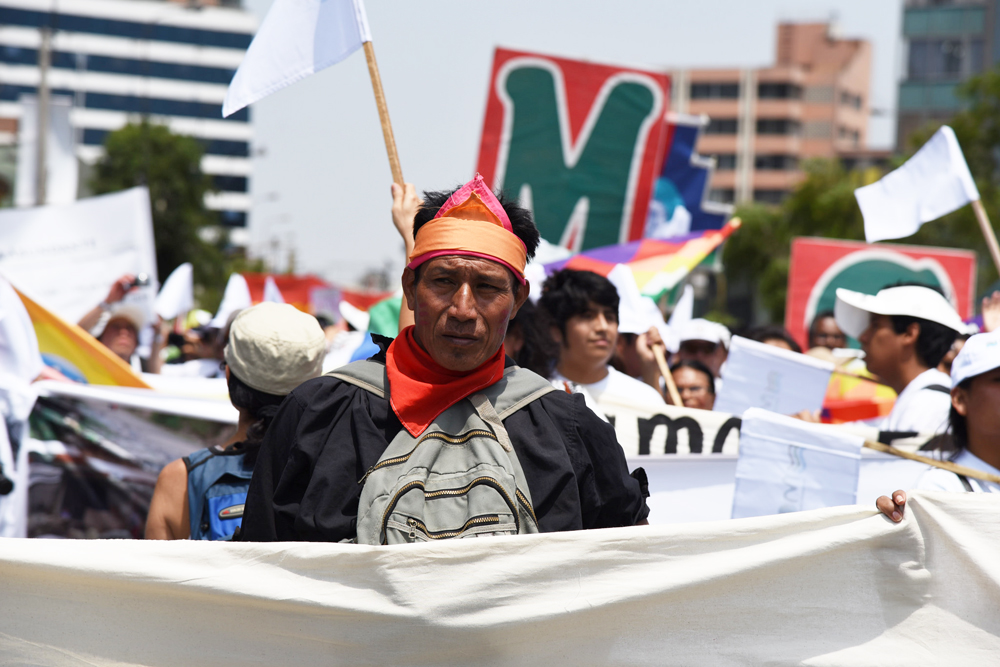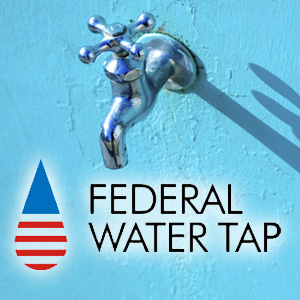To Avoid Drought Calamity, Cape Town Restricts Water Use
Reservoirs supplying city of 4 million are nearing bottom during record-setting drought.
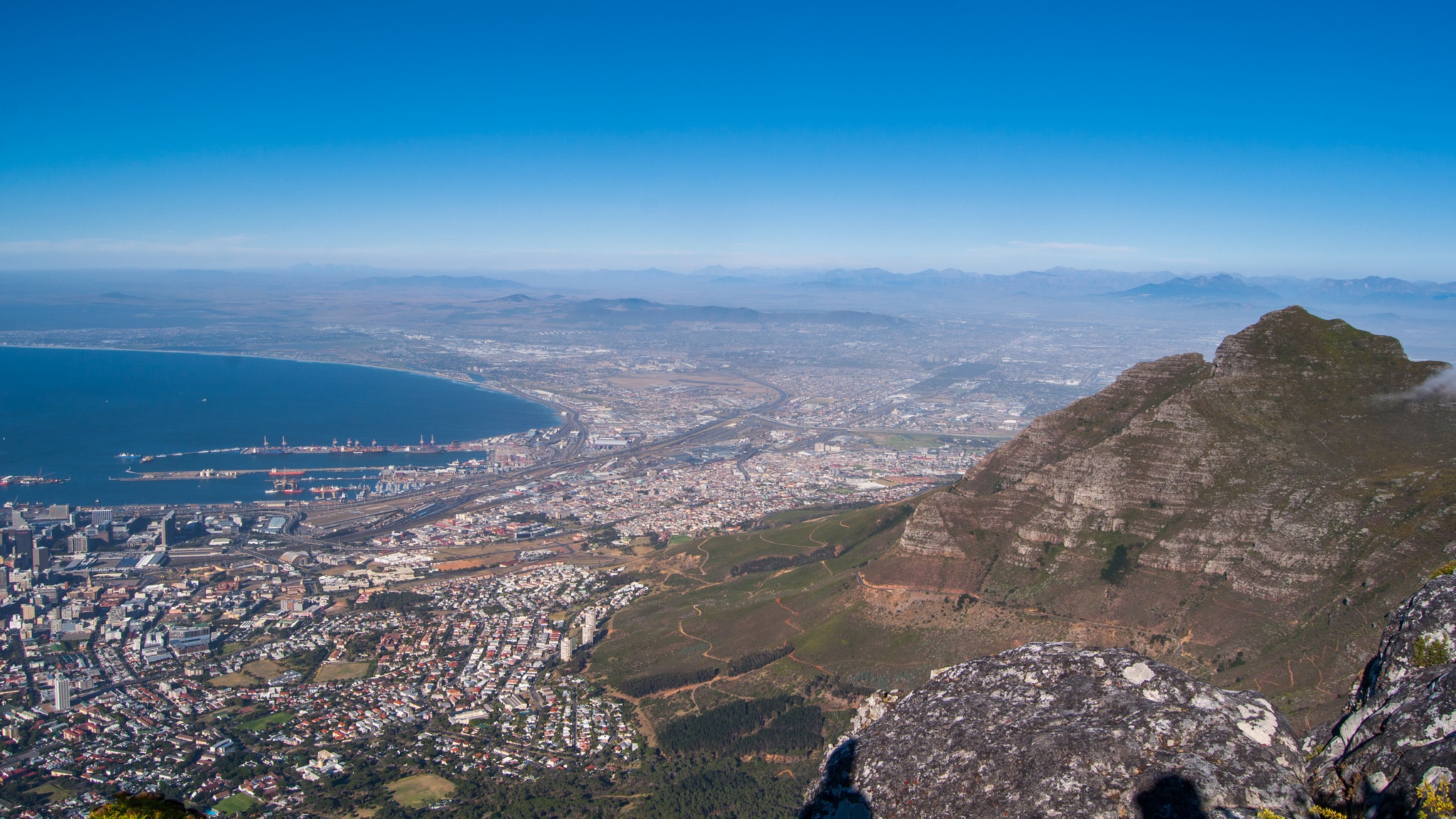
A city of 4 million people, Cape Town is banning outdoor water use in response to the worst drought in more than a century. Photo courtesy of Flickr/Creative Commons user merajchhaya
By Brett Walton, Circle of Blue
“If it’s yellow, let it mellow,” reads a May 24 post on the Cape Town city government’s Facebook page. “Flushing only when needed can help save up to 9 liters (2.4 gallons) of water per flush.”
Every drop counts these days in South Africa’s second-largest city. A harsh drought, the worst in more than a century by some counts, is pushing water supplies to the brink. A week ago, the provincial government declared the Western Cape region a disaster area. Cape Town officials will likely ban outdoor watering and increase water rates starting June 1 in an effort to drive water use per person below 100 liters (26 gallons) per day. In these circumstances, even bathroom behaviors are targets for change.
“This is not a drill‚” Xanthea Limberg, a City Council member, said in a statement.
Strong action is needed because Cape Town’s six main reservoirs are combined less than 20 percent full. Half of that water is unusable because it lies below the dam outlets. Fortunately, a reprieve is approaching: the four-month wet season. The three-year rainfall deficit is too great to be closed in a single rainy season, but observers think the city can conserve enough water by banning lawn watering, car washing, and pool filling to avoid draining the reservoirs.
“The feeling is that we should be OK this year,” Kristy Carden, a water management researcher at the University of Cape Town’s Future Water Institute, told Circle of Blue. “This 10 percent [of usable water in the reservoirs] will probably be fine until July and then it should be raining. But yes, it’s a scary time.”
Carden said that though city officials should have acted sooner to curb water use, there has been recent progress. Peak use in January, which is the height of summer in the Southern Hemisphere and when demand is highest, was down roughly 20 percent compared to a year ago. Current consumption averages just under 670 megaliters per day. Water managers want daily use to fall to 450 megaliters through the winter, an “easily achievable target,” according to the Future Water Institute. A megaliter is one million liters, or 264,000 gallons.
The city is also fast-tracking emergency measures in case winter rains fail: tapping groundwater and testing new facilities to purify seawater and reuse municipal wastewater. Carden points out, however, that these schemes are small in scale, amounting to less than five percent of current demand.
A Look at Tomorrow, Today
Cape Town is the latest international city to experience a water supply crisis as sharp droughts collide with increasing urban populations and infrastructure designed for a climate of the past. Cape Town’s population has grown by 40 percent in the last 15 years, an addition of more than one million residents. It relies for water almost completely on reservoirs filled by rainfall.
The drought scenario in Cape Town is similar to the emergency a few years ago in Sao Paulo, the largest city in Brazil. Sao Paulo’s water utility was forced in 2014 to install emergency pumps in the Cantareira reservoir when water levels dropped below the outlet works. It is a move that Cape Town officials are considering, if they need to tap the bottom 10 percent of their reservoirs.
Consecutive dry years in the Western Cape, while extreme compared to the past, should be a caution sign. As the planet warms, the region’s climate will shift by the 2030s or 2040s, a group of the country’s top science agencies assert.
“There is little doubt that the Western Cape needs to prepare, in the longer term, for a drier climate,” according to the Alliance for Collaboration and Earth Systems Science.
Those preparations ought to begin now, argues Carden, whose research group is studying the use of natural systems to store water.
One potential solution lies underfoot. Cape Town sits above a sand aquifer that is ideally suited for soaking up water, Carden explained, pointing out that the city receives more rainfall than it can use. Cape Town just needs to manage it better, she said. One of its neighbors has been doing so for decades.
The town of Atlantis, some 50 kilometers to the north, developed a groundwater recharge program in 1979. Treated industrial wastewater is injected underground near the coast as a barrier to the inland movement of salt water. Treated residential wastewater and rainfall are funneled to filtration basins that replenish the aquifer. An award-winning water recycling facility in California’s Orange County operates on the same principles.
Carden hopes that Cape Town can mimic Atlantis or even water-scarce Singapore, an island city-state that has turned two-thirds of its land area into a catchment basin to collect rainwater.
“We’re a long way off doing that,” she said. “But what a drought does is it really sharpens people’s minds in terms of thinking differently about the way we’ve always done things.”
Brett writes about agriculture, energy, infrastructure, and the politics and economics of water in the United States. He also writes the Federal Water Tap, Circle of Blue’s weekly digest of U.S. government water news. He is the winner of two Society of Environmental Journalists reporting awards, one of the top honors in American environmental journalism: first place for explanatory reporting for a series on septic system pollution in the United States(2016) and third place for beat reporting in a small market (2014). He received the Sierra Club’s Distinguished Service Award in 2018. Brett lives in Seattle, where he hikes the mountains and bakes pies. Contact Brett Walton

